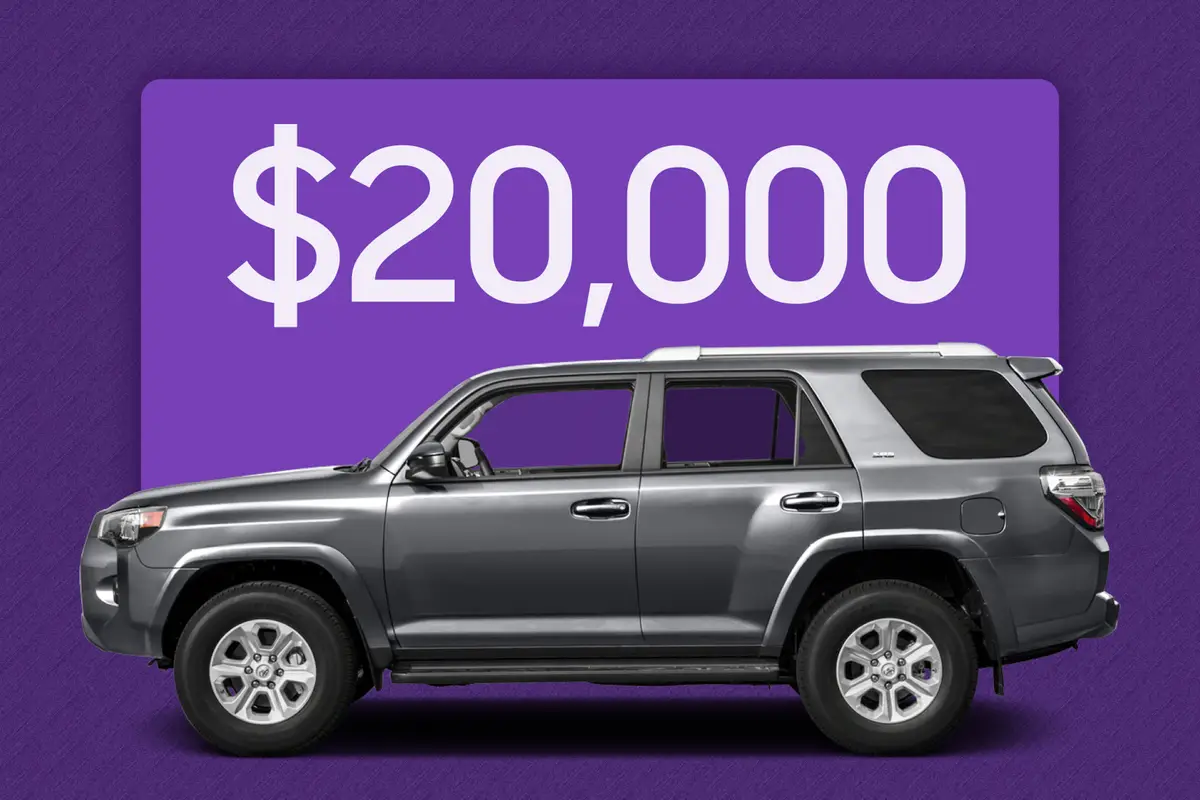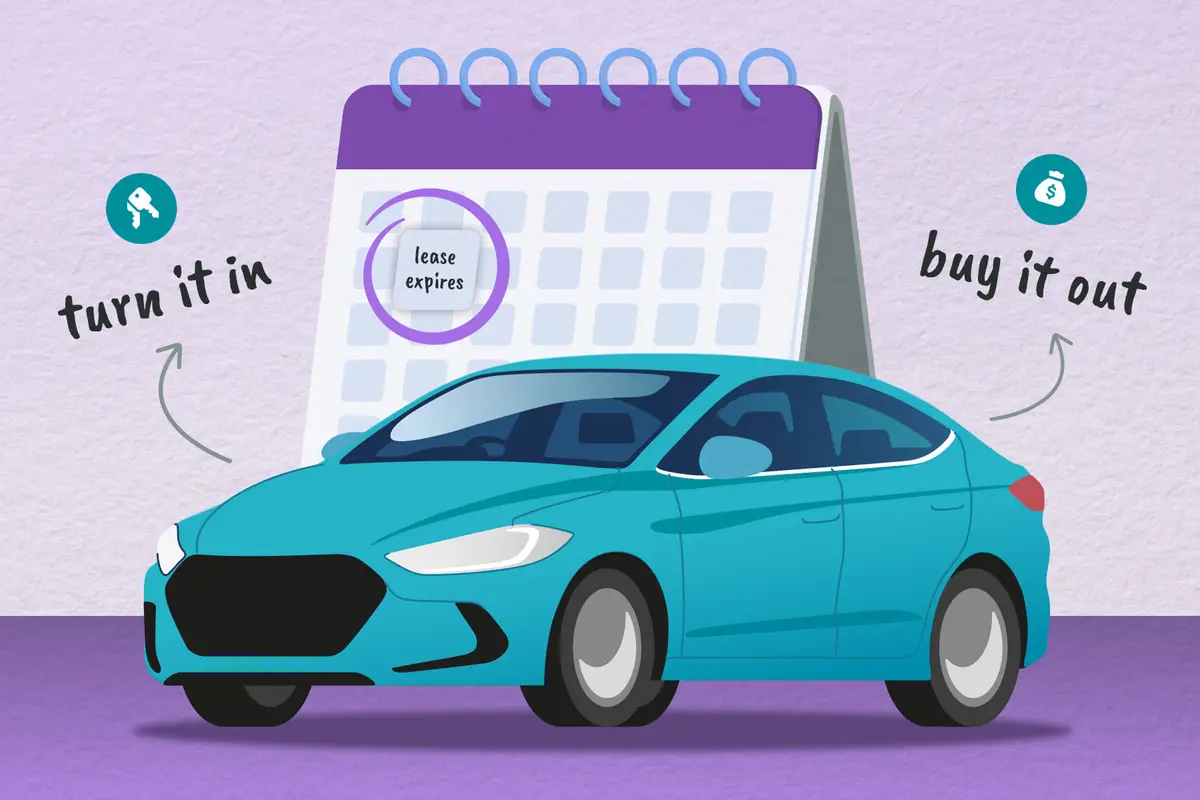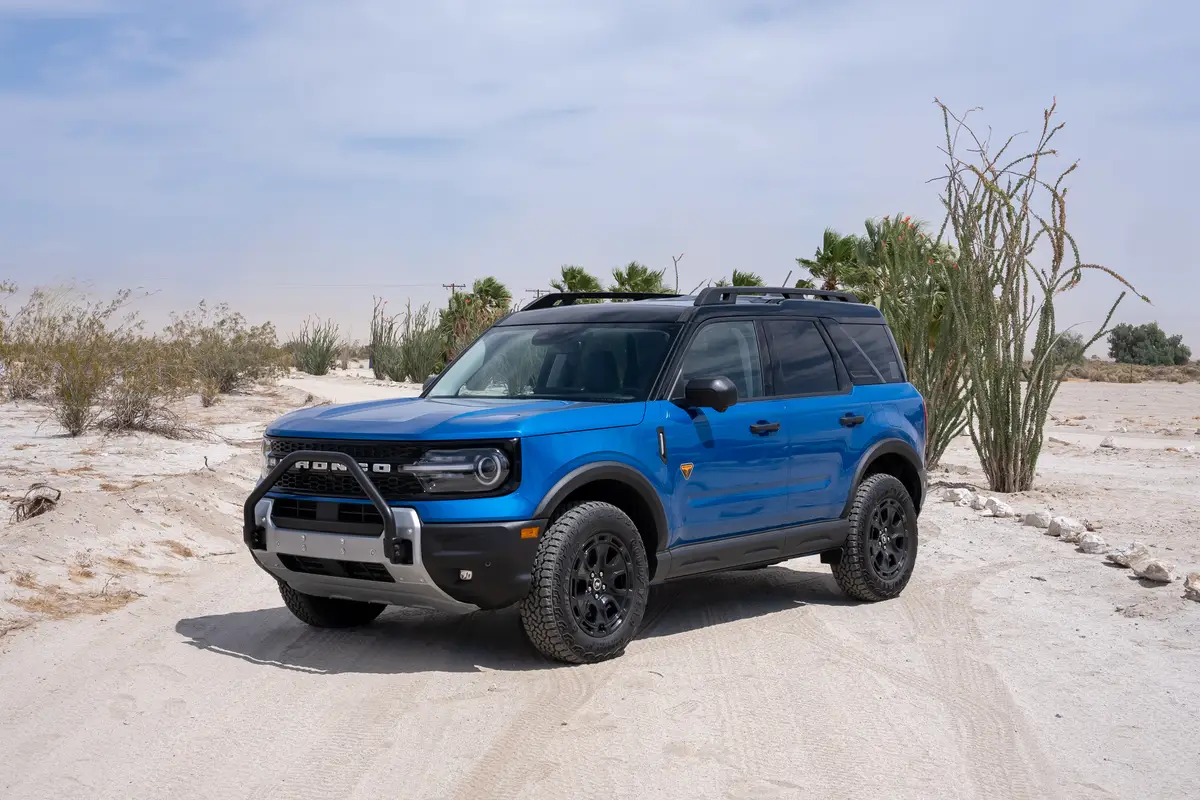We Pit the 2019 Ford Ranger Against the 2018 Toyota Tacoma in a Real-World Test
We gave the newly reborn 2019 Ford Ranger a , but you know that's not good enough for Pickuptrucks.com — we wanted to see how the Ranger measures up to the most popular mid-size pickup trucks. We already broke down how the specs/trims measure up, so now it was time to test these two in the real world.
That meant a head-to-head comparison with the reigning mid-size sales king, the 2018 Toyota Tacoma, a formidable opponent with a reputation that sets a high bar for the 2019 Ford Ranger to surpass. We tested these two trucks on a long on-road drive to test fuel economy, at an off-road park and did a quick jaunt with both trucks filled to their maximum payload capacity all in the Los Angeles area.
Our Ranger was a 4×4 SuperCrew Lariat and the Tacoma was a 4×4 TRD Sport Double Cab, giving both trucks some common ground right out of the gate. Both had 5-foot beds and four-door cabs with wheelbases that were only 0.6-inch apart. And both these trucks run ahead of the pack on safety features as they had forward collision warning with automatic emergency braking, lane keep assist and adaptive cruise control among other safety technologies. Despite these congruencies however, the two pickups quickly distinguished themselves in both philosophy and execution — especially under the hood.
The Toyota is powered by a 278-horsepower, 3.5-liter V-6 that makes 265 pounds-feet of torque and is mated to a six-speed automatic transmission. The Ranger is only offered with a 270-hp, turbocharged 2.3-liter four-cylinder engine, but at 310 pounds-feet of torque it has a significant torque advantage and comes with a 10-speed automatic transmission. Also found on the Ranger was a more robust off-road setup, thanks to the FX4 Off-Road Package that added a locking rear differential and Ford's Trail Control system — neither of these features are offered on the TRD Sport we tested.
There were also some interior differences in both features and technology that ended up making a big difference in our scoring.
Judges were PickupTrucks.com Editor Mark Williams and Cars.com Los Angeles Bureau Chief Brian Wong; we scored the trucks on a scale of 1-10 across 10 categories, giving each truck a potential total of 200 points.
Powertrain
Winner: Ranger (18 points; Tacoma 14 — all scores out of 20)
Mark Williams: The more I drive the Ranger, the more I'm surprised at how powerful the four-cylinder feels, especially when you knock the shift lever down into Sport mode; the revs stay up, throttle response gets more sensitive, and when you want to jump into or out of traffic, you practically just think and it happens. Of course, transmission mapping is the key here and obviously the Ford engineers understood this mid-size class is suffering, with no one providing a real sport player. Of course, it doesn't hurt that the new Ranger is pretty light. I also like that it offers a separate Sport mode and Tow/Haul setting. As much as I like the Tacoma electronically controlled transmission power button mapping for the transmission (which makes the shifting feel stronger) and the knock-up/knock-down shifter, the Ranger makes better use of all the power and torque.
Brian Wong: The Ranger's powertrain makes it a legitimately fun truck to drive around, even in town. Whether it's in Drive or Sport, the engine is eager to rev and quick to get into the power, and that's in stark contrast to the Toyota's V-6, which needs to be poked and prodded. The Toyota's Atkinson cycle might be good for efficiency, but it also comes with throttle delays that I couldn't get over. I much prefer the Ranger's ability to feel lively in all of its drive modes.
On-Road Drivability
Winner: Ranger (16 points; Tacoma 14)
BW: The Ranger's powertrain quickness teams with solid road manners. The Ranger we tested had the FX-4 Off-Road Package with the off-road tuned suspension. Though it's set up for off-road, I found it to be pretty good on pavement as well; its tuning isn't so soft that you get too much body roll.
The Tacoma was by no means a poor-driving truck, but it seemed to struggle on inclines, not because it lacked power but because the engine just takes longer to get into the power, and it feels like your foot is in the floormat all the time. I was also perplexed by the Tacoma's steering, which seems to have its priorities reversed — it's too heavy at low speeds and too light at high speeds, and that led to a bit of vagueness I didn't like on the mountain roads.
MW: This felt pretty close to me because you really have a lot of flexibility with how you choose to drive the Tacoma. It feels readier to rumble, with the tap-up/tap-down shifter knocked over to Sport, if that's what you want. I'm not crazy about the little thumb shifter on the Ranger's gear selector but it's hard to argue when you feel the quickness of the throttle when you want to merge into a small gap on the freeway. Add to that the firmness and flatness of the front-end handling and this was the favorite for me running up and down the mountain roads outside Los Angeles.
Off-Road Capability
Winner: Ranger (16 points; Tacoma 12)
MW: I can't really say the Ranger sets a new standard in this area, but it does offer some impressive features that matched up pretty well with the standard four-wheel-drive system in the Tacoma TRD Sport. When in low range, the extra gearing advantages of the Ranger's 10-speed really helped on the rocky hill climbs with the better low-range gear (2.72:1 versus 2.57:1). Trail Control is pretty interesting technology designed to turn over throttle and braking duties to the computer, but we did find it had some trouble keeping engine revs up and modulating braking. In fact, there were a few situations where we rolled backward during some challenging climbs, which was not fun. Still, it's technology and capability the TRD Sport couldn't match — it will be interesting to see the Tacoma TRD Off-Road or TRD Pro compared against the Ranger's Trail Control later. The Tacoma did well but with its seemingly street-biased 265/65R17 Firestone Destination tires, it had some gripping issues. The Ranger was equipped with 265/60R18 Hankook DynaPros.
BW: I agree wholeheartedly; both of these trucks could have used a more aggressive tire though it's interesting that the Tacoma offers two models with good all-terrains, but the FX4 package is it for the Ranger. The Ranger's 10-speed transmission turned out to be quite good off-road after its impressive on-road showing, and for a turbocharged engine, the torque curve wasn't as peaky as I feared. It's got good dexterity for crawling and good power output for running faster in the dry riverbeds we found.
Though the Tacoma's tires didn't fare well, I thought the rest of it did quite nicely. There's some great articulation in the rear axle; low range helps keep the engine in a spot where the power output is a little more predictable.
Payload
Winner: Ranger (18 points; Tacoma 14)
BW: We weighed both trucks with full tanks of gas and they were remarkably close with only a 20-pound difference. The Tacoma tipped the scales at 4,540 pounds and Ranger at 4,560. To get a true payload rating, we subtracted those numbers from the factory gross vehicle weight rating and the Ranger crushed the Tacoma, 1,490 pounds to 1,060 pounds. That's a large difference when it comes to hauling, and I would have offered a bigger gap in the scoring to reflect this, but I thought the Toyota drove a bit better with a load in the back. This is due in part to the Ranger's brakes; they are a bit soft at the top end of the brake pedal. Usually that doesn't bother me too much, however, with almost 1,500 pounds in the back that vagueness was unwelcome. While we didn't get a chance to tow, it's worth noting that the Ranger's maximum tow capacity of 7,500 pounds outpoints the Tacoma's maximum of 6,400 pounds (in the configurations we tested).
MW: This was probably one of the easier categories to score for me. It's astonishing, to say the least, that Ford built the Ranger to be just as light as the other players in the class (with the help of aluminum doors, hood and tailgate), yet it's able to carry more than any other mid-size pickup (Ford rates it at 1,860 pounds max). Here, specifically, the Ranger is rated to carry over 40 percent more weight than the Tacoma. We found the four-cylinder Ranger did pretty well with the progressive bump-stops carrying some of the load. The V-6 Tacoma, on the other hand, felt the least taxed at max payload, as though it could handle more weight if it needed to. Scale weights being close, we vote for the pickup with the bigger GVWR: The Ranger is rated at 6,050 pounds and the Tacoma at 5,600.
MPG
Winner: Tacoma (20 points; Ranger 18)
BW: The expectation was the Ranger would win this, given its recently released EPA ratings of mpg are the highest for a gas-powered 4×4 in the class. Our Tacoma came with the 3.5-liter V-6, and one would think its EPA ratings of 18/22/20 mpg would put it at a disadvantage to the Ranger's turbocharged four-cylinder.
However, the Ranger missed its fuel-economy targets and finished slightly behind the Tacoma. The Tacoma checked in at the end of our loop with a 21.4 mpg average, edging out the Ranger's 21.3 mpg.
Our 250-mile loop around Southern California covered a variety of driving styles, from city driving to mountain roads with big elevation changes and desert highways. With an average speed of 42 mph, we had hoped to see both trucks edge up near their estimated highway mpg figure, but only one truck did that: the Tacoma. Both trucks were filled at the same pump prior to and after the drive for accuracy.
MW: I have to say this was a bit of a surprise — definitely something we'll have to revisit in upcoming fuel-economy tests. Our measured efficiency of the Tacoma's is impressive compared to the Ranger's stronger and more powerful inline-four-cylinder with almost twice as many transmission gears. The problem is that to have any fun with the V-6 Tacoma you have to do your own shifting and make sure you have the ECT Power button engaged — and that can really cut into your fuel-economy numbers. Of course, that's not how we drove during our fuel economy loop.
Bed Technology
Winner: Tacoma (17 points; Ranger 15)
MW: The Ranger has a standard deep steel bed with three strong mounting tie-down points near the floor, while the Tacoma uses a composite bed to save weight and prevent scratches from showing, but it also offers two lockable storage spaces tucked into the walls and ours came with the 400-watt three-prong outlet for outdoor electrical jobs (we should note the Ranger also has a three-prong 110-volt outlet, but it is inside the cab at the feet of the rear passengers). I like having the outlet in the bed and a place to hold my gloves, a strap and some small tools.
BW: The Tacoma's lower load-in height to get things over the tailgate gets a nod here. It also offered dampers when lowering the tailgate so it doesn't bang down when you open it. One positive note about the Ranger is that the tailgate is aluminum and very light, so it's super easy to close, and you can easily lift it even with only a few fingers.
Interior Quality
Winner: Ranger (15 points; Tacoma 11)
BW: Though the seat materials were close in quality, the front seats of the Ranger were much more comfortable. The Tacoma lacks a height adjustment for its front seats (across all trim levels), which made finding a good driving position more difficult — having it would help mitigate some of its headroom issues. I kept bumping my head against the fabric near the side window while driving, which got annoying.
Both trucks had excellent side visibility, but the Ranger's larger windshield and copious headroom made it feel more spacious. It's also a more modern cabin, while the Tacoma opts for a rugged look that felt like it needed updating.
MW: This category is a big separator. This is where the Tacoma is showing its age — the Ranger Lariat has plenty of soft padding in the center console, door arm rests and wrapped along the entire dash. It also offers a large touchscreen, plenty of cubby storage, along with two USB ports in front and two in back. Tacoma TRD Sport has hard plastic everywhere, the space feels more cramped, and vents and charging ports are nonexistent in the backseats.
Technology
Winner: Ranger (16 points; Tacoma 12)
MW: Our Ranger's multicolored information screen in the instrument cluster shows all the engine, fuel-economy and four-wheel-drive data you could want, much of it selectable with a button on the steering wheel. After that, the center dashboard touchscreen and updated Sync 3 setup makes controlling music, street info and climate quick and intuitive. Toyota has done well adding technologies to the Tacoma during the last few years, but the smaller display screen and low button location, not to mention the small info screen between the large tachometer and speedometer, make hunting for info or buttons more difficult.
BW: When it comes to connectivity options, the Ranger pulls away from the Tacoma again, offering Android Auto/Apple CarPlay with a screen that responds faster and is simpler to use. The angle of the screen in the Ranger is a bit weird at first — it's tilted back slightly, but I got used to it during our three days with the truck. Four USB ports, two 12-volt ports and a household outlet in the cabin give the Ranger copious charging options. The Tacoma? It has one lonely USB port and a 12-volt outlet up front, though the Tacoma did have a nicely sized wireless charging pad, which was its only interior technological advantage.
Safety Features
Winner: Ranger (20 points; Tacoma 18)
BW: Both trucks came with an impressive array of safety features, which is not surprising given that Ford has offered these technologies in the F-150 and Toyota remains committed to making them standard on the majority of its vehicles. Adaptive cruise control, lane keep assist, forward collision warning with automatic emergency braking and blind spot warning systems were offered on both trucks, along with parking sensors (the Ranger had front and rear, while the Tacoma had only rear).
MW: The top-of-the-line Ranger Lariat we tested came with a bevy of advanced safety features and given all the traffic issues (and unpredictable drivers) we had around Los Angeles, I experienced the collision warning and auto braking a few times. That'll wake you up. The Ranger's softer brake pedal feel took me a while to get used to but did eventually get me to do some earlier, harder braking. Radar cruise control settings are pretty easy to set up as well. Comparable equipment in the Tacoma did not feel as well integrated, nor were these features easily visible for adjustments or turning off (where possible).
Value
Winner: Tacoma (17 points; Ranger 14)
MW: The value category long has been controversial because there are those who believe the least expensive should always win. Others argue that bang-for-the-buck is the priority, while still others defend whichever player best checks the most boxes for their specific needs, no matter what the cost. In some ways I fall into all three categories, giving the nod to the Tacoma TRD Sport that costs almost $4,000 less than the Ranger Lariat yet is still fun to drive and returns decent power and fuel economy for a V-6. And I choose to believe the Toyota engineers have built a sizable cushion into their max payload number.
BW: I look at the Ranger's $44,855 price tag and the Tacoma's $40,670 and try to figure if you get $4,000 more truck with the Ranger. I do think mid-size pickups have a tendency to be slightly overpriced, but these both offered a good amount of features (especially on the safety front) and capability. I think the Ranger comes close to offering enough in terms of better on-road and off-road drivability, technology and interior quality to make up some of that difference in price, but not all the way. An interesting comparison would be to redo this test against a Tacoma TRD Off-Road, which has a more aggressive tire setup to give the Tacoma more off-road edge.
Overall Winner: Ford Ranger (166 points; Tacoma 149)
The Ford's powertrain advantages and interior quality and technology really carried the day for it here. At the end of our test, both trucks handled all aspects of the testing quite well, but the ease at which the Ranger went about it stuck out to us. It has the advantage of being the newer truck, and the Tacoma's issues will likely be addressed when it gets a redesign, but for the time being, we are comfortable saying that the Ranger was the clear winner of this competition. It looks like Ford's time away from the mid-size class in the U.S. didn't prevent it from making a high-quality entrant in its return.
Cars.com photos by Evan Sears

Featured stories




